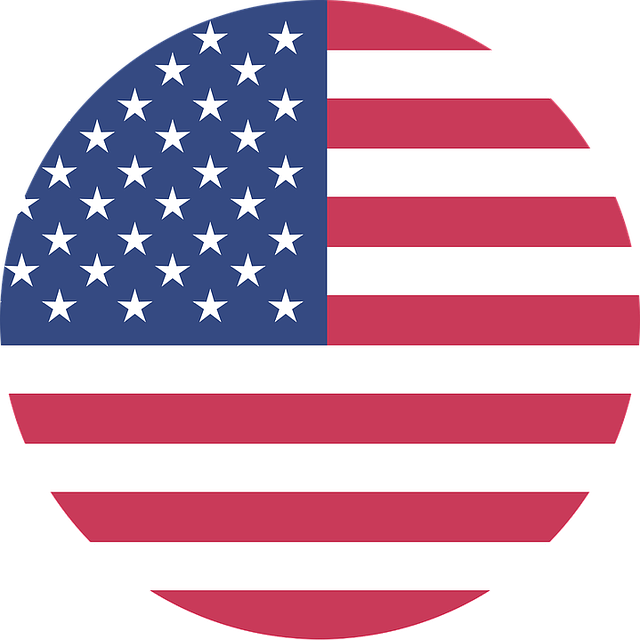 Submitted by American Man on
Submitted by American Man on

Image by Mary Pahlke from http://Pixabay.com
An alchemist's view:
Red, White, and Blue
First we must begin with the colors, for a wealth of information can be gained merely by an historical and esoteric examination of the colors and the point of their origin. To get to the core symbolism within the flag one need visit ancient Egypt. The colors, red, white, and blue, correspond to the colors of the various crowns worn by the Pharaoh, and are associated with different functions – and therefore different cognitive states – of the Pharaoh.
The Red Crown represented the Northern Kingdoms of Lower Egypt. This area lay along the southern border of the Mediterranean Sea and comprised the entire Nile River Delta. Lower Egypt formed the commercial hub of ancient Egypt and its ideals of trade and the laws governing trade defined the ancient world and continue to define our world today. The White Crown represented the Southern Kingdoms of Upper Egypt. Upper Egypt lay nestled along the thin band of life on either side of the Nile River beginning in modern day Aswan and descending northward to the area just south of modern day Cairo. Where the primary focus of Lower Egypt was secular and commercial, the focus of Upper Egypt was esoteric and spiritual. Worn together, the Double Crown represented the Pharaoh’s capacity to function as a King (secular/commercial authority) and a Priest (ecclesiastical/spiritual authority) of the Most High God; of which the Pharaoh was the physical, mortal incarnation. The crown (all crowns represent this) signifies the Pharaoh’s active, conscious participation in the divine process – or the Mind of God – both temporal and eternal.
The color blue is representative of the Blue Crown of the Pharaoh, also called the War Crown. The War Crown of ancient Egypt represents the Pharaoh executing the will of the sun god Ra (whom he is a mortal incarnation) through the performance of war as an instrument of politics. The idea behind why it is the Blue Crown and not the Red Crown as the color of war requires one to assume the perspective of our ancestors who gazed into the heavens and understood the planets and the stars as representative of celestial consciousness, the gods. At night, the truth of our existence as a participant with the gods within the celestial play in the heavens is confirmed. But during the day, as the sun rises, this play is lost to us. The Sun God rises – the Morning and Evening Star (also a solar reference anciently, later attributed to Venus, but any astronomer will tell you the only star in the area that is visible the morning or evening IS the Sun) – slaying all the other gods and casting a veil of blue across the heavens to conceal them from our consciousness, leaving only what the Hebrews later wisely called “The Jealous God” who would have no other gods before Him to dominate the heavens for the course of what once was considered night and now is called day. Remember, anciently (and biblically) the day was defined as from the “Evening to the Morning,” and not morning to evening as we define day to mean presently. Knowing this, one must then ask oneself, “Why do we also call the dawn ‘Morning?’” Is there a relationship between “Mourning,” and “Morning?” Yes! Because “Morning” and “Mourning” are correlates phonetically, and therefore definitive of each other, relative to the cognitive state of the ancient participate in the spoken language. Remember general literacy within a population is a relatively novel thing. Anciently the sound of a word was the word. Therefore, when we say we are in mourning, it is because we are sad following the death of someone or something. Recognizing the ancient perspective relative to the gods as celestial objects and forces, it is therefore sensible to say that when the Sun rises, slaying the other gods and removing us from the reality of our lives in context with the universe, we mourn in the morning because we know we shall forget what we saw when the Sun was not up, and so we grieve (or did so anciently). Thus, the beautiful blue of the daytime sky is actually the color of war among the gods, and now also the color of war among men.
These three crowns, the Red, the White, and the Blue represent the three core functions of any government: the regulation of commerce and trade; the regulation of ecclesiastical authority; and the capacity to wage war as a instrument of politics. Any nation bearing these colors can be assumed to be a participant in this cognitive structure. The degree of participation in each of these three areas or functions of government is exhibited by the nature, context, and presentation of these colors upon the national ensign in question. Whether it be the American ensign or the ensign of another nation bearing the same colors, it is ultimately the same relative to the nature of the three colors; only their form or function may vary as a matter of scale or context, as we shall see in our investigation into the national ensign of the United States of America.
With this symbolic background, let’s turn our attention to the flag of the United States of America. The National Ensign of the United States of America has seven red bars and six white. The red bars mark the flag from top to bottom and are representative of the Red Crown of Lower Egypt. From this we can determine that the core priority of America is commerce. Considering that taxation without representation was the supposed core motto of the Revolutionary War, if not the fabled Boston Tea Party, it is no small wonder that the dominant interest of this nation would be that of trade, top to bottom. The fact that there are seven red bars corresponds to the seven planetary influences which express their influence upon the mortal world. Seven also corresponds to time as measured by the properties of water, the moon, and the sea. All secular law is defined and ruled by Admiralty Law, which is the Law of the Sea, and a correspondent the influence of the moon upon cycles of time and fertility. Finally, red is the color of mortality and therefore time, and this reveals yet another Kabbalistic association to the planet Saturn, red also being a color under that planets presidency. Esoterically and from an Alchemical standpoint, all these things bear direct influence upon that which is secular and commercial.
The six white bars represent the nation’s pursuit of independent ecclesiastical interests, being tied to the White Crown of Egypt, and the ecclesiastical power it bears. Furthermore the bars are uninterrupted, like their red counterparts, indicating a separation between secular interests and ecclesiastical interests; state and church. Additionally, the six bars calls to mind an hexagram, from which the idea of a cube or the development of the Shatkona might be rendered if properly assembled. This is an indication that regardless of ecclesiastical pursuit or practice, the founders were aware that all religions were beneficiaries of Saturnian Structure as an effort to enlighten and enliven the Soul of Mankind. Their separation expresses the Luciferian (and Masonic) ideal that one can choose for themselves to be enlightened or not; it will be they who seek the light and assemble for themselves that which can be made of the six white bars.
More can be gleaned through a numerological investigation of the thirteen bars or stripes. The number seven (7) and six (6) when placed in juxtaposition to each other form the zodiac Sigil for Capricorn.
Capricorn is under the rule of Saturn, which provides of an additional confirmation that the nation under which this ensign is flown shall be the beneficiaries of Saturnian structure. This is clearly evident in our legal system where all judges wear black robes (black is the color of Saturn) and fulfill the role of the Pillar of Severity – Judgment – over which Saturn presides. Further number play reveals that Saturnian influence is balanced under the presidency of Jupiter, as that 7 X 6 = 42, and 42 reversed (an oldie but a goodie relative to esoteric favorites) is 24. The number 24 when combined or written together as done with the seven and the six reveals the Sigil of Jupiter, the merciful and benevolent King of the Gods. An appeal to these celestial powers (and their cognitive associations) is an appeal to obtain all things associated with them. Thus an appeal to Capricorn is a recognition that this is a new nation, climbing out of the darkness into the light much as the mer-goat of Capricorn climbs out of the sea and up the mountain of the Zodiac like a rising sun! An appeal to Jupiter is an appeal to secure the needs of the many without tyranny.
There are other associations with the number 13 that are of significance, not the least of which is the Myth-Legend of the god Osiris, his dismemberment by his jealous brother Set, and his eventual restoration by his beloved wife and sister Isis, with the aid of their mutual sister Nephthys. In fact, the list of possible mythological associations and their correspondences can become a bit lengthy, and for the sake of time we shall forgo further elaboration relative to mythological archetypal relationships. I imagine you get the idea that there’s a great deal of esoteric wisdom embedded within our National Ensign, or the national ensign of any nation for that matter!
Finally, there is the field of blue containing fifty white stars. The field of blue is representative of the War Crown of Egypt as discussed above. The stars bear witness to each State of the Union, the stars being floated in the field of blue is representative of the one thing all states stand united by and under; that being the function of war as an instrument of politics. The importance and esoteric relevance of the five pointed star could fill a vast amount of space, and consume a great deal of time in the explanation, so rich and vital is this sacred symbol. Suffice it to say it is a reference to many things including, but not limited to the following short list. The pentagram (five-pointed star) has been attributed to the star Sirius; the planet Venus and its orbital pattern of celestial and terrestrial conjunction; the sacred feminine; the five mortal senses; the mortal coil; a side of a dodecahedron; and so much more! The significance of the field of blue which unifies and carries the stars was discussed above. The fact that this is the only thing which unifies the nation as a whole is very telling, and explains this nation’s history and places it within a very specific relief.
There is a reason why a national flag is called an ensign. The word ensign originates form the Latin, insignia, which means “Signs of Office.” The National Ensign exhibits the “Signs of Office” or the range, nature, and expression of power of the nation in question. An examination of any flag bearing the colors red, white, and blue demonstrates an understanding of the relationship of these powers to ancient thought and that such thinking is far from ancient, but quite relative today and a continuing paradigm of modern political thinking and action.
So consider all that you are to “Call from memory,” but specifically, the one thing that has ever united – and will continue to unite – this nation, that being the function of war, and all the wars which the United States of America has spent its lengthy history waging.
- 566 reads